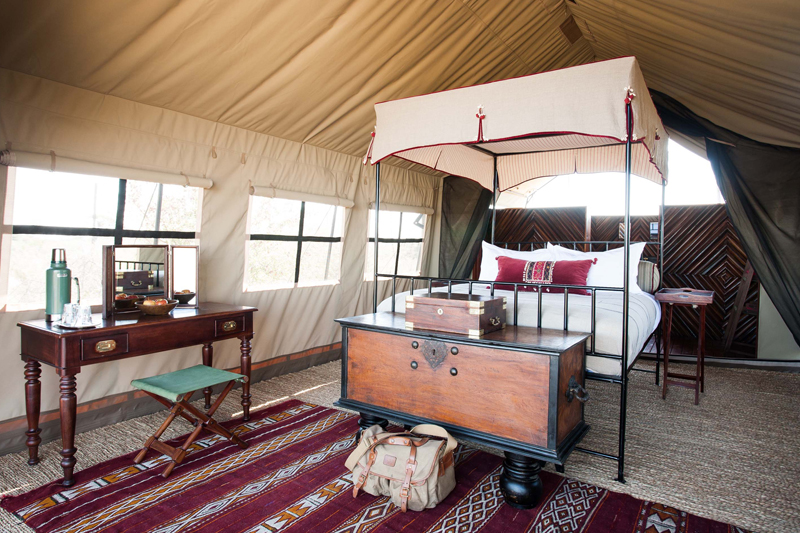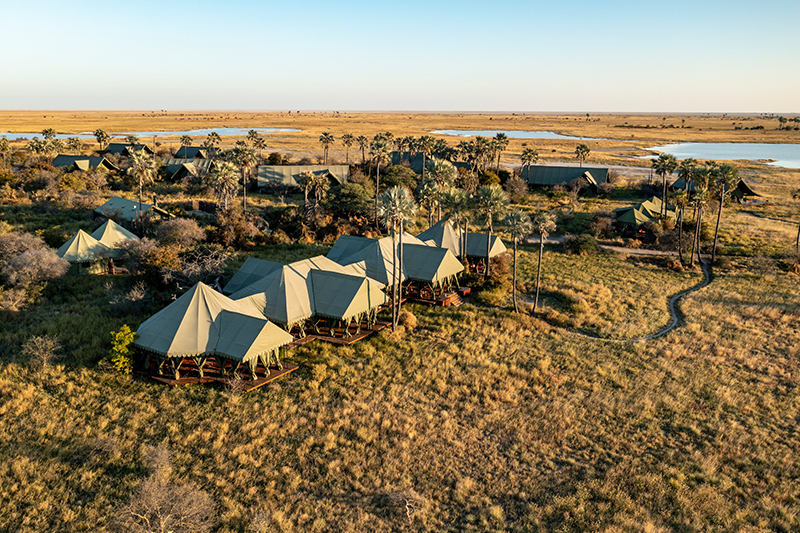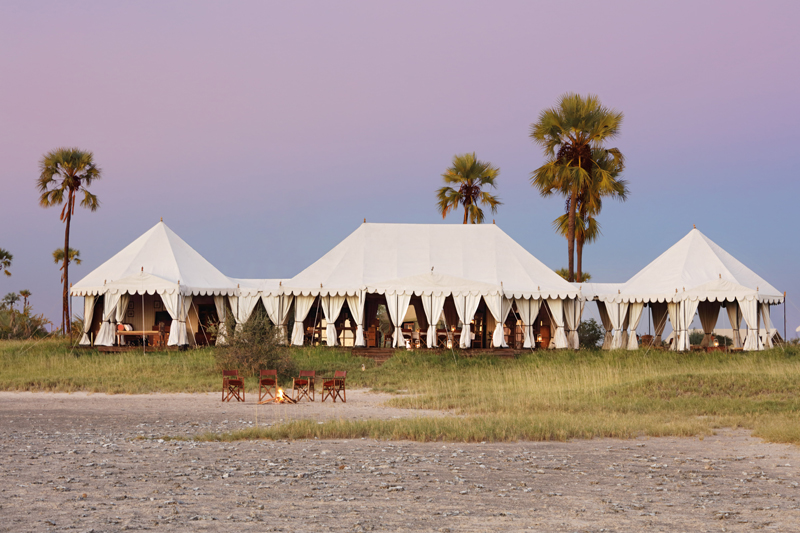Makgadikgadi Pans and Nxai Pan National Park
Together with the adjacent Nxai Pan, the Makgadikgadi Pans cover an area of nearly 5500 sq.miles.
The pans, remnants of a huge inland sea, are largely void of vegetation except for a few areas of open grassland and isolated baobab islands. During the rains (December to March), the pans fill and attract large numbers of waterbirds including flamingos and pelicans. Great herds of wildebeest, gemsbok, springbok and zebra also gather, but once the dry season sets in, the water-reliant species migrate to leave an ‘empty’ wilderness with an eerie silence.
Various species of wildlife can be found year round in the grassland and scrub bush that fringes the pans, including brown hyaena and meerkat, two of the key species of interest found within the Kalahari ecosystem.
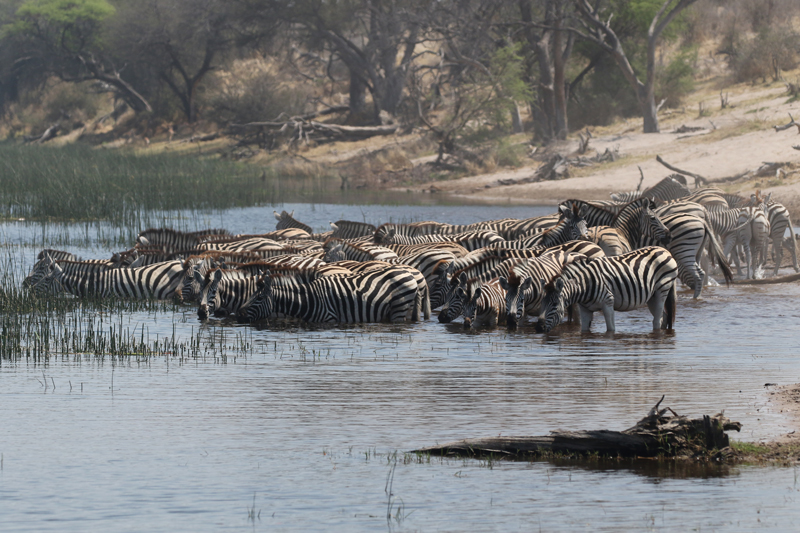
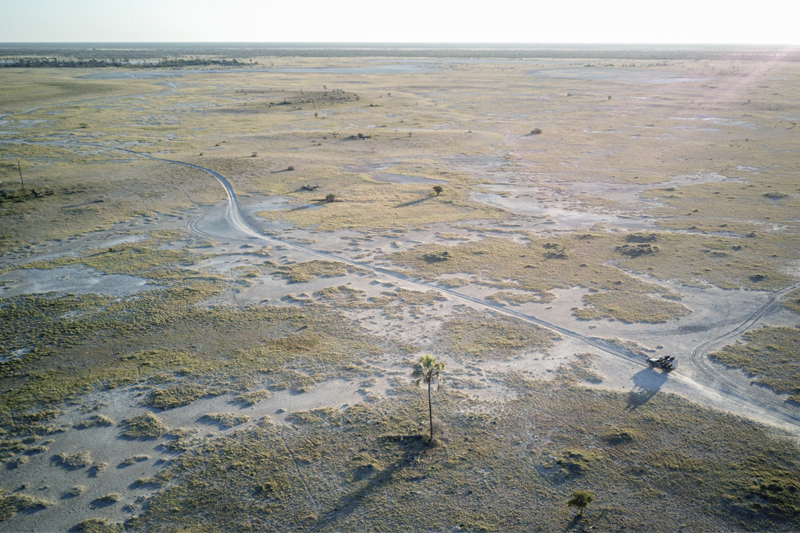
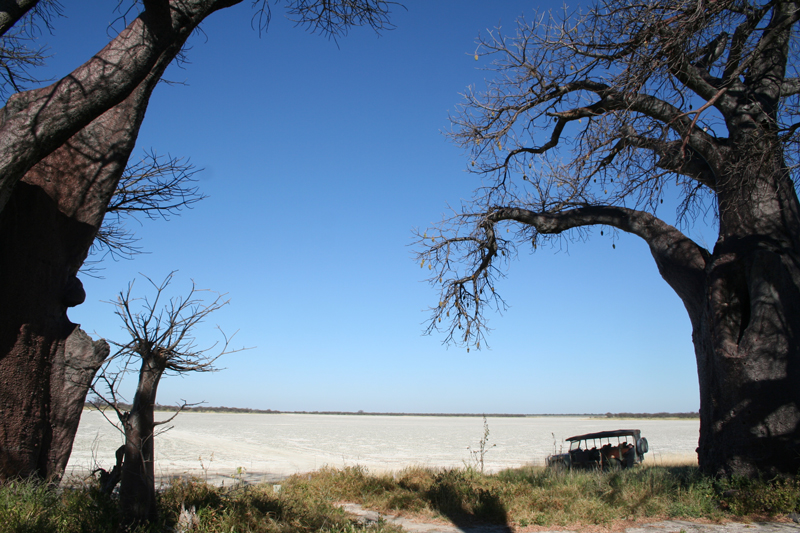
Nxai Pan National Park lies just north of the Maun-Nata road and adjoins Makgadikgadi Pans National Park on its northern border. Nxai Pan was originally state land and an area of 1676 sq. km was declared a game reserve in 1970. In 1992 the boundaries were extended to include Baines Baobabs to give the present total area of 2578 sq km, and National Park status was granted. The Nxai pans were once part of the great lake that covered central Botswana – which included The Okavango Delta, Makgadikgadi, Lake Ngami and the Mababe Depression to name a few.
In 1861, the famous painter Thomas Baines painted an unusual group of baobab trees, one of which lies on its side, and these beautiful trees became known as “Baines Baobabs”. They are located on the south-east side of the park.
The pan itself is another fossil lakebed about 40 sq km in size. The landscape is largely covered by grassland, and dotted with clusters of umbrella acacia and mopane woodland in the north. During the rains from November to April – the pans become covered in grass which is a landscape very similar to the Central Kalahari.
Nxai pan is well known for its huge springbok population and once the rains have started, gemsbok, elephant and zebras migrate to the region. At this time zebra come in their thousands to drop their young. Extraordinarily large herds of giraffe can be seen with up to 30 in a group. These large herds attract predators – lion, leopard, cheetah, jackal and both spotted and the elusive brown hyena, as well as the endangered wild dog. During the dry season some species migrate to other areas, but a ‘pumped’ waterhole supports the resident game and so there is good game viewing all year round. Once the rains have started, the bird life is excellent.
For further information for how best to include the Makgadikgadi Pans in a Botswana safari itinerary please call us on +44 (0) 1787 888590 to discuss your requirements, or email us via our Contact Us page.


